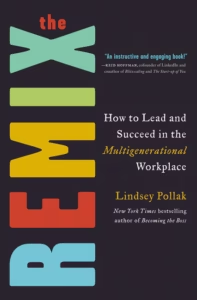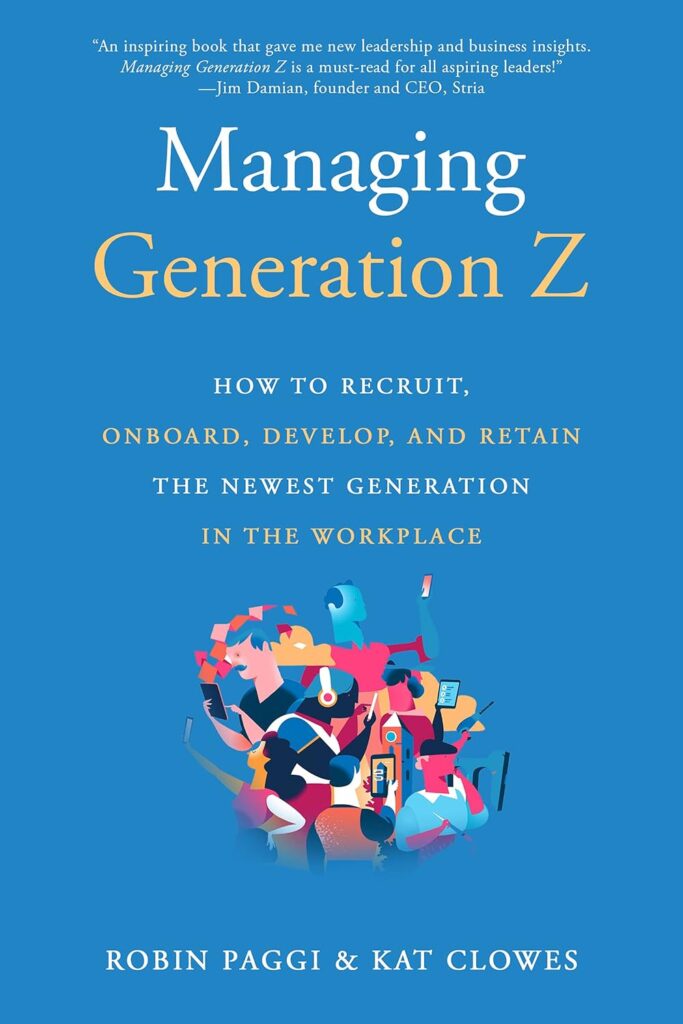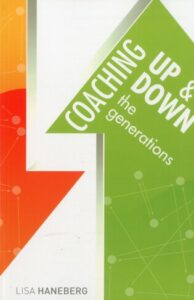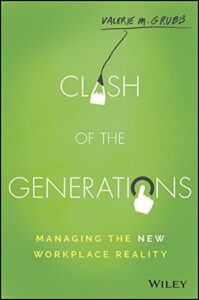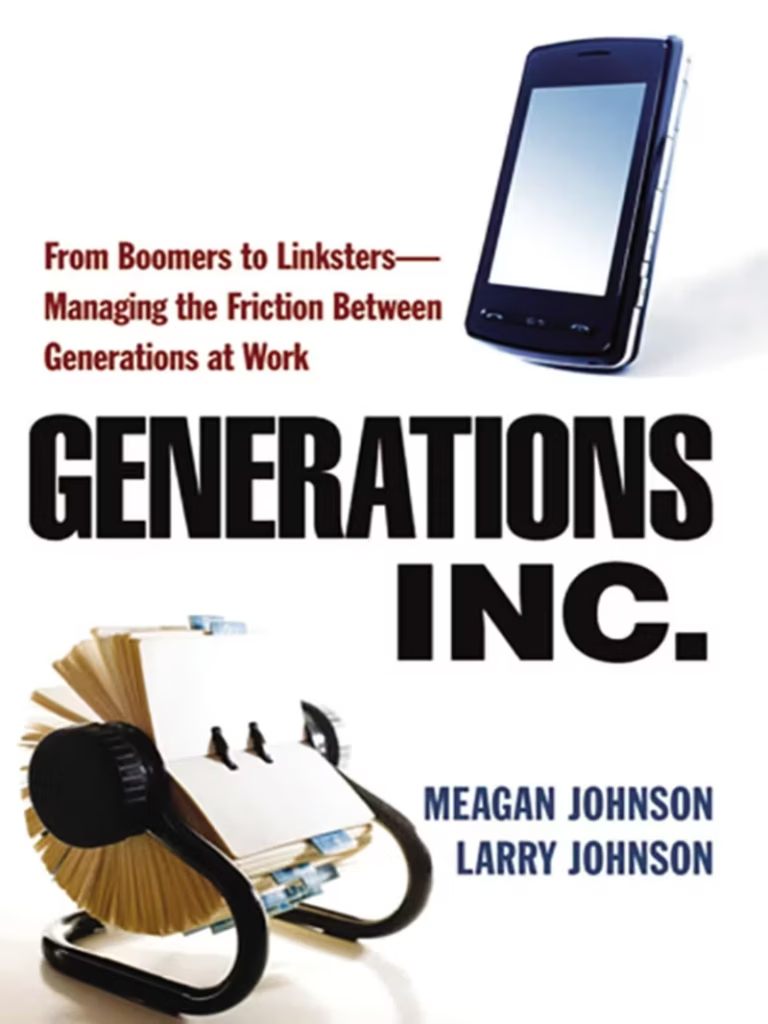An intergenerational work relationship is at the heart of the plot in The Intern, a 2015 Nancy Meyers film that stars Robert De Niro as 70-year-old Ben Whittaker, a widower who has become dissatisfied with retirement. Looking to re-enter the working world, he applies to become a “Senior Intern” at a fast-paced, millennial-dominated, fashion e-commerce startup founded by Jules Ostin (played by Anne Hathaway). Defying age stereotypes, Ben quickly adapts to the workplace, where he learns from his new colleagues and develops a mentor-mentee relationship with Jules.
While the film highlights the comedic aspects of multi-generational differences in the workplace, it also speaks to how businesses can leverage diverse skill sets, facilitate collaborative problem-solving, and foster a strong environment for mentorship. All of these factors can lead to greater organizational success — but often Baby Boomers, Gen X, Millennials, and Gen Z employees come to the workplace with distinct values, expectations, and communication styles. This dynamic can present a challenge for business leaders in knowing how to motivate and retain their staff.

A workplace friendship between a Baby Boomer and a Millennial is at the heart of the story in The Intern. (Photo: Warner Bros.)
Paula Summers is all too familiar with this leadership challenge. As the People Director of ShipNet, she is a human resources leader who has shared her expertise on the topic with others within the Volaris Group network, including at the Quadrants 2024 conference. She believes the key to bridging generational gaps starts with curiosity, kindness, empathy, and open communication.
“Understanding generational differences gives us a strategic advantage,” she says. “It helps tailor leadership approaches, create inclusive environments, and ultimately get the best out of their teams.”
She is not the only one within Volaris who holds this view. Andy Wheeler has led multi-generational teams at two Volaris-owned companies, Artifax Software and Grosvenor Systems. He has seen how fresh faces can complement the long-term employees at a company.
“With different generations in the workplace, you get the mix of experience and new energy, new ideas, validation, and challenge,” Wheeler shares.
Fostering a diversity of perspectives can yield significant benefits. But how can leaders best harness the benefits of a multi-generational workforce?
Try to find common ground, whether it’s a younger generation or a generation older than you. There are threads that run through all of us through our shared experiences, and we can definitely embrace the differences.
-Andrew Gould, General Manager, Squirrels (a Volaris-owned company)
Understanding the Generations in the Workplace
It can be helpful to understand the context of each generation as they have grown up and entered the workforce.
“Today’s workforce is more generationally diverse than ever before, and each group brings its own set of expectations, motivations, and communication preferences,” Summers says. She advises that leaders who understand these dynamics can improve employee engagement, alignment, and retention.
Summers gives these descriptions of each generation:
- Baby Boomers (born approx. 1946 to 1964)
Baby Boomers are often seen as hardworking, loyal, and resilient. They value structure, stability, and face-to-face communication. With decades of experience, they bring deep institutional knowledge, a strong work ethic, and mentoring and coaching capabilities. They also have experience in adapting to change.
Although the percentage of this generation is steadily dropping as more of them reach retirement age, they still make up a proportion of the workforce. As they are coming to the end of their career, they look for benefits such as retirement plans, healthcare insurance, and flexible working options.
- Generation X (born approx. 1965 to 1980)
Gen X is known for being independent, pragmatic, adaptable, and entrepreneurial, with a strong work ethic. They came of age during technological shifts, including the transition from analog to digital, and as such are good at adapting to new technology. They value work-life balance and bring a solutions-focused mindset to leadership and management.
This generation looks for what the company has to offer them and what the exact expectations are. Their loyalty to a manager is more important than to the company, so being a mentor, supporter, and educator to this generation boosts retention.
They often look for a work-life balance in a more traditional context, such as through time off – so they may value an annual leave program that allows them to purchase or sell back additional holiday time.
- Generation Y / Millennials (born approx. 1981 to 1995)
Gen Y, also known as Millennials, make up the majority of our colleagues and are likely to be highly educated. They are considered the most ‘over-educated’ generation. They are generally ambitious and looking for a challenge.
They grew up as technology and social media were coming of age, assisting them in being purpose-driven, tech-savvy, and collaborative. They tend to seek meaningful work, regular feedback, and growth opportunities – they are multi-taskers, less formal, and more open to change.
They are also broad-minded travellers, so they are less attracted to the 9-5 and are likely to see the appeal in visiting countries all over the world.
They seek benefits such as flexibility, wellness, meditation, yoga, gym memberships, opportunities to work abroad, and social after-work activities.
- Generation Z (born approx. 1996 to mid-2000s)
Gen Z are likely to be the youngest colleagues in the workforce and are the first truly digital-native generation – they’ve never known a world without the internet. As a result, they are very tech-savvy and can help our businesses stay competitive in a quickly evolving global workplace.
They frequently look to develop their skills on the job and look for jobs that they believe to have a meaningful impact on society. They look for clear career paths ahead of them and perform at their best when they have regular feedback from managers.
They have similar expectations to Gen Y or Millennials. They value individuality, diversity, and social impact. They expect fast communication, inclusive environments, and continuous learning. They bring creativity, fresh perspectives, and a strong grasp of emerging tech trends.
Summers warns that while these generational insights can be useful as a starting point, it’s essential to remember that they are generalizations and not rigid rules.
“Everyone brings their own unique experiences, motivations, and preferences to work regardless of when they were born. That’s why it’s so important for leaders to go beyond labels and truly get to know their people as individuals.”
When we listen, stay curious and create space for everyone to be themselves, we build stronger relationships and more inclusive, high-performing teams.
-Paula Summers, People Director, ShipNet (a Volaris-owned company)
Advice for Overcoming the Generation Gap
Are you a leader who is looking to improve your cross-generational IQ at work? Here are three key ideas to guide your journey:
1. Flexible leadership is the future.
“The most effective leaders know when to adapt their style, whether that means giving more structure, offering autonomy, or shifting how they give feedback,” says Summers. “Understanding the preferences of each generation can guide the way you adapt.”
Being a flexible leader can mean adapting the way you lead or adjusting workplace conditions. For example:
- Do your employees respond well to a less structured, flatter hierarchical environment versus a more structured, authoritative environment?
- Do your employees prefer email versus Slack or other communication tools?
- How frequently do your employees want or need feedback?
- Does your benefits package reflect the values of the employees you would like to attract and retain when it comes to retirement, holiday, or wellness benefits?
- What do your employees consider to be a rewarding career development opportunity – the ability to hone new skills, or to mentor others?
Just because one generation views something less importantly than you do, doesn’t necessarily mean it’s a bad thing. It’s just a different viewpoint. And when you add up all these different viewpoints, that’s where you get the best sort of consensus of direction and what to do and where to go.
-Andrew Gould, General Manager, Squirrels (a Volaris-owned company)
2. Psychological safety bridges generational gaps.
“Regardless of age or experience, people thrive when they feel safe to speak up, be themselves, and make mistakes,” says Summers.
Wise leaders realize that when it comes to understanding the needs of their people, they can’t know it all. By using open communication and an open mind, leaders can listen to their employees’ needs and create an inclusive environment that fosters a sense of psychological safety.
“Leaders who create inclusive, open environments will naturally support generational collaboration. Generational labels can help us understand trends, but the real impact comes from seeing and treating people as individuals,” says Summers.
A major business advantage of creating an inclusive workplace is that employees may feel more comfortable sharing bold ideas that stretch the current thinking of the team, especially if they know they won’t be penalized for sharing an unconventional idea. Inclusivity creates a foundation for a more creative and innovative team.
3. Encourage an environment of shared learning and mentorship.
Multi-generational workforces have the potential to leverage a broader skill set, particularly when teams are built from members from diverse generational backgrounds. New viewpoints can create a foundation for innovative ideas within the business.
For example, businesses can gain insight into a customer demographic through their employees. For Andrew Gould, General Manager at Squirrels, a Volaris-owned business: “Gen Z is going to become the main customer we’re selling to in five to ten years, so we need to make sure that what we’re offering lines up from a product perspective, and that the way that we speak to them resonates. We don’t want to sound like our parents talking to us when we were younger.”
Practicing mentorship can also create opportunities for emerging leaders as they practice knowledge transfer within an organization.
“Mentorship is rarely a one-way street. Mentors often gain just as much from the relationship as the mentee by learning about new technologies, fresh perspectives, and emerging trends,” says Summers.
Books for learning how to lead and manage employees across generations
Closing thoughts on cross-generational collaboration
The bottom line? When multi-generational teams work collaboratively, organizations can gain a broader knowledge base, improve their collective problem-solving skills, and build a more resilient workforce — all competitive advantages in a fast-moving business landscape.
“Generational diversity is a strength. When embraced, it drives creativity, innovation, and resilience,” concludes Summers. “Different perspectives lead to better decision-making, and that’s something all businesses can benefit from.”
